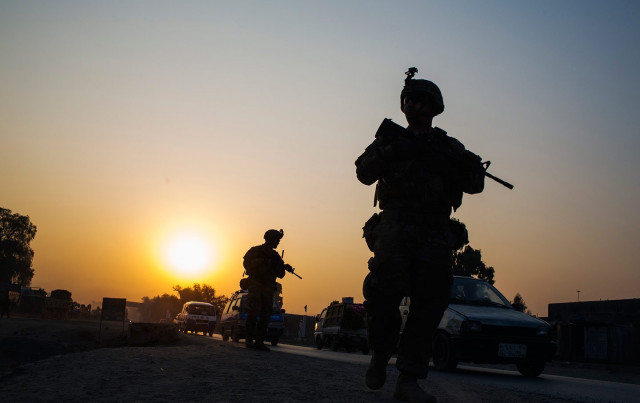Peace in Afghanistan: ifs and buts
It makes no difference to the US if Afghanistan bleeds.

A Reuters file photo
President Donald Trump also says a peace agreement is “very close”. He sees a good chance of having a deal. According to sources, he has given a conditional approval to the deal with the Taliban to allow him to withdraw US troops over the next two weeks.
In this context, the Pentagon chief has also emphasised that there will be a continuous evolution of violence. “It is our view that seven days, for now, is sufficient but in all things, our approach to this process will be conditions-based… I will say it again, conditions-based,” he insists.
According to a statement issued by the Spokesperson for the Presidential Palace, US officials have told President Ashraf Ghani that the Taliban are ready to “quit violence” and accept a “pluralistic society”. The spokesperson says the deal is “very specific” and covers the entire country, including Afghan forces. The signing of a partial peace deal would enable the US to pull out a sizeable number of troops. As a quid pro quo, the Taliban would ensure a number of security guarantees and ultimately hold talks with the Kabul government.
While the announcement is certainly a welcome move, the path towards peace is still hazardous with a lot of ifs and buts. There is many a slip between the cup and the lip. There are still many questions to answer. The wording “reduction in violence” in itself is quite intriguing and difficult to interpret. This means that there can still be violence, with both sides claiming that the number of incidents has reduced. However, just one odd incident would jeopardise the entire process. Then what is the harm in a complete end to violence? The condition of reduction in violence may augur well for the US troops but not for the Afghan people who have continued to suffer.
The agreement between the US and the Taliban is considered an easier part of the whole process. The difficulties that lie ahead are in details of the negotiations between the Taliban and the Afghan government over the expected role of the militant group’s share in the government, and the future shape of the political set-up. It is also not clear what would happen after seven days and whether the Taliban would agree to end violence during the intra-Afghan talks determining the future shape of the country.
In this backdrop, one of my friends remarked during a course of discussion that the Taliban, having learnt hard lessons, may have abandoned their brutal and retrogressive style of governance and would, therefore, be acceptable to the US. My immediate comment was that superpowers like the US frame national polices in the light of their national vital interests and go to war whenever and wherever it is threatened.
Supremacy of power all over the world is considered as the prime national interest. In order to protect those interests, they create a sphere of influence in the region to check-mate other powers considered inimical to them.
For them, in areas such as Afghanistan, the rhetoric of democracy, human rights and pluralism are just a lip service. The moment the US feels that the Taliban are no longer a threat, they will simply walk away. They are least bothered about the internal conflicts among the Afghans, or their abysmal poverty and suffering due to human rights violations as long as no threat is radiated to the strategic interests of the US. One can find such a clue from their policy towards the Middle East and other regimes in the world which cannot boast of democratic value systems and adherence to the notions of human rights as enunciated in the UN Declaration of Human Rights.
For instance, despite Saudi Arabia claiming to have an Islamic system built around family rule with no space for pluralism and little room for human rights, it is still the most favourite ally of the US. Had the US really been committed to its ideological moorings to democracy, its policies in the Middle East would have been different. Thus in line with realist theory, the US, without having any consideration for human rights, supports dictatorial regimes in the region due to converging interests.
With fast approaching US elections, Trump wants to boast to the electorate about his fulfilment of another election-time promise of bringing the US troops home. From what it appears to be, he will withdraw a sizeable chunk of troops but retain strategic presence in the area. It makes no difference to the US if Afghanistan bleeds. The question that still begs an answer is whether the US landed there because the Taliban had a tyrannical rule. Nay, their boots made a footprint there once they realised that the emanating threat of al Qaeda was hitting the US social order. This makes it clear that it was not for the love of Afghans, but its own national interests that drew them there. The US will go to any place that threatens their vital national interests. So, all stakeholders in the Afghan peace process should evaluate their national interests from their own perspectives.
Published in The Express Tribune, February 19th, 2020.
Like Opinion & Editorial on Facebook, follow @ETOpEd on Twitter to receive all updates on all our daily pieces.















COMMENTS
Comments are moderated and generally will be posted if they are on-topic and not abusive.
For more information, please see our Comments FAQ